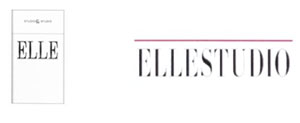Battle over the Elle trade mark
31 October 2014Elle is a familiar trade mark, perhaps even to those who do not closely follow fashion trends. It has been owned by Hachette Filipacchi Presse since 1987 (trade mark certificate 83647 in respect of goods in Class 16 ICGS — see image).

In the meantime, the Patent Office registered a similar trademark Studio Studio Elle (number 450508) and a combined trade mark (number 456766) with the word element Ellestudio, both in 2010 (see images).

Hachette naturally believing that its rights were infringed by the new registrations appealed the decisions of the Patent Office seeking cancellation of the registrations.
The Chamber of Patent Disputes (part of the Patent Office) examined the appeals on April 4 2013 and rejected the appeals leaving the controversial trade mark registrations in force.
Hachette did not agree with the decisions of the Chamber and initiated a court action at the IP Rights Court asking it to oblige the Patent Office to cancel the trade marks.
The first instance of the IP Court accepted the claims of Hachette. Explaining its decision the Court stated that the combination of evidence on file confirms that the magazine published by the plaintiff or by persons on his approval in which the trademark Elle is used is widely known to the consumers. The chances of mistaken perception of the controversial trade marks reproducing the word element Elle by consumers are enhanced because of the long and active use of the trade mark by its true owner. The appealed trade marks mislead consumers with regard to the goods and their manufacturers because they are confusingly similar to the trade mark of the plaintiff long before the filing dates of the appealed trade marks. In fact, the use of the trademark Elle in the combined trade marks of the respondent is an act of unfair competition forbidden by Article 10 bis of Paris Convention.
The trade mark owner of the original trade mark has built a solid reputation of the trade mark and the use of an identical trade mark in respect of goods in different classes by other persons may lead to unfair advantages riding on the solid business reputation of the original trade mark and will certainly mislead the consumers with regard to the goods and their manufacturers.
The decision of the court was appealed by the owner of the controversial marks to the cassation instance: the Presidium of the IP Court. The Presidium of the Court declined the appeal and found no reasons to reverse the decision of the first instance court.
The plaintiff sought to cancel the controversial marks because those marks could mislead consumers with regard to the manufacturer of tobacco products because they include the designation Elle. Those trade marks include the word element identical to the title of the fashion and style magazine published by the plaintiff under his trade mark.
In turning down the appeal of Hachette, the Patent Office based its decision on the fact that the appellant and the owner of the controversial marks operate in different business areas: one publishes a magazine while another produces cigarettes. These goods do not cross, they belong to different categories.
Nevertheless, the owners of the controversial marks ignore the fact that the chances for misleading consumers are not defined exclusively by the homogeneity of the goods but may also occur during the use of designations which acquired wide popularity because of their continuous use which may lead to association with other goods, not being homogeneous.
Elle magazine has been published for a long time, including in Russia. This was established by court of first instance on the basis of the evidence available on file.
The owner of the controversial marks argued that the word Studio would preclude misleading understanding. However this statement was not accepted by the court because the word Elle is obviously dominating in both trade marks. Hence the fact of unfair competition was confirmed by the Presidium of the IP Court.
This case shows the reasonable and well based flexibility of the IP Court.










